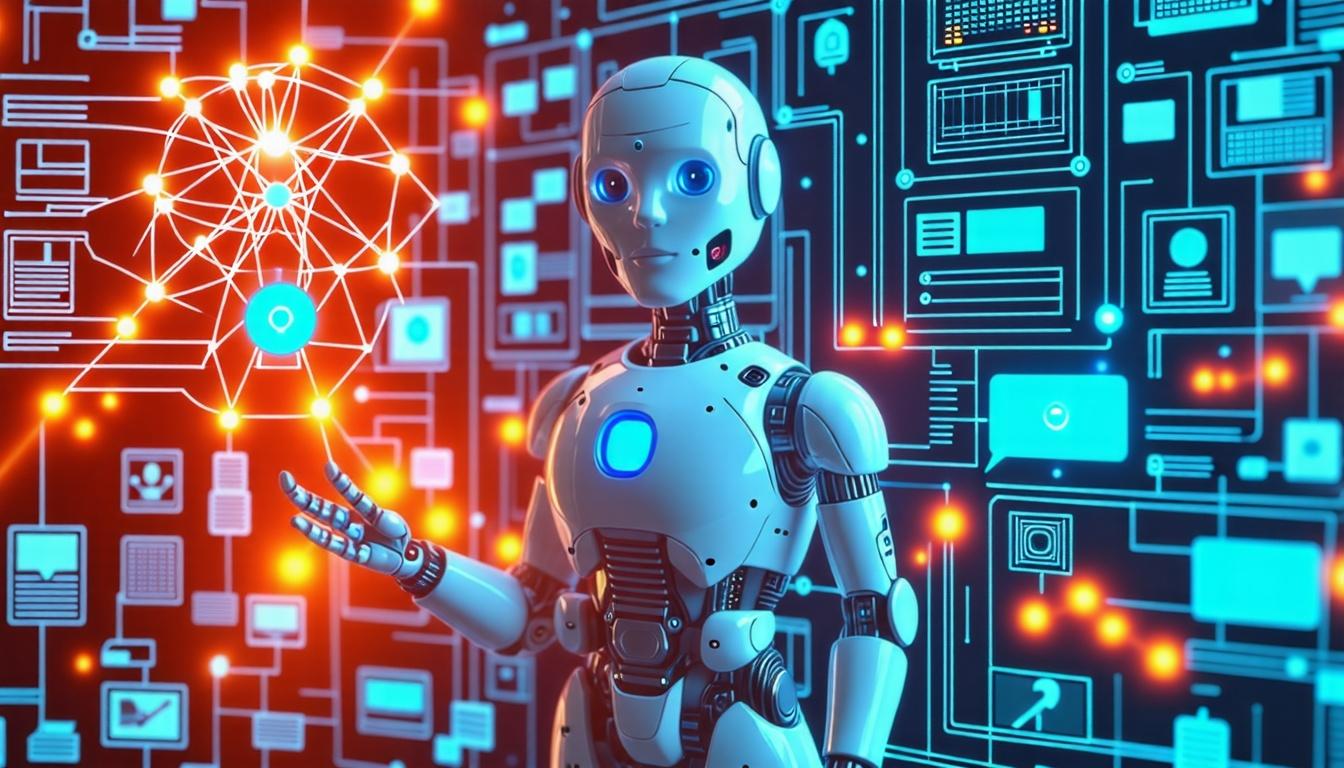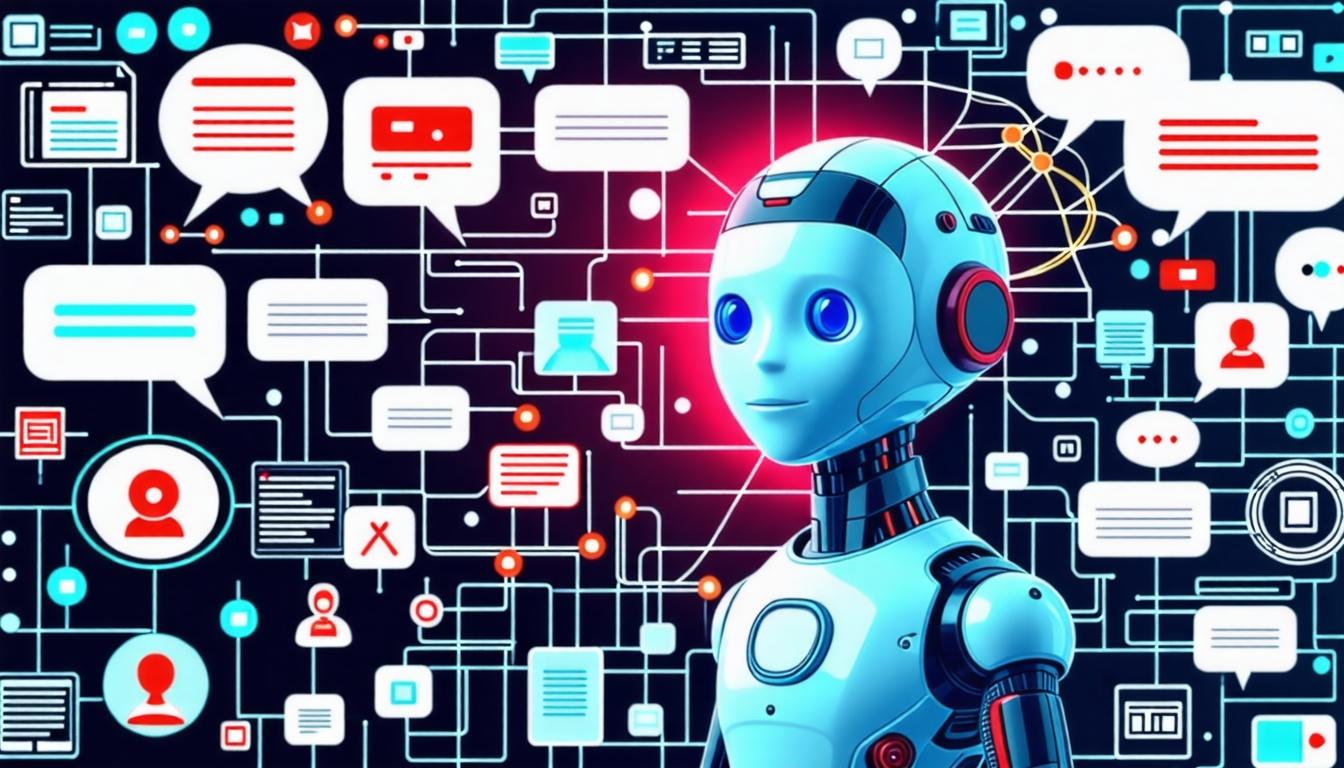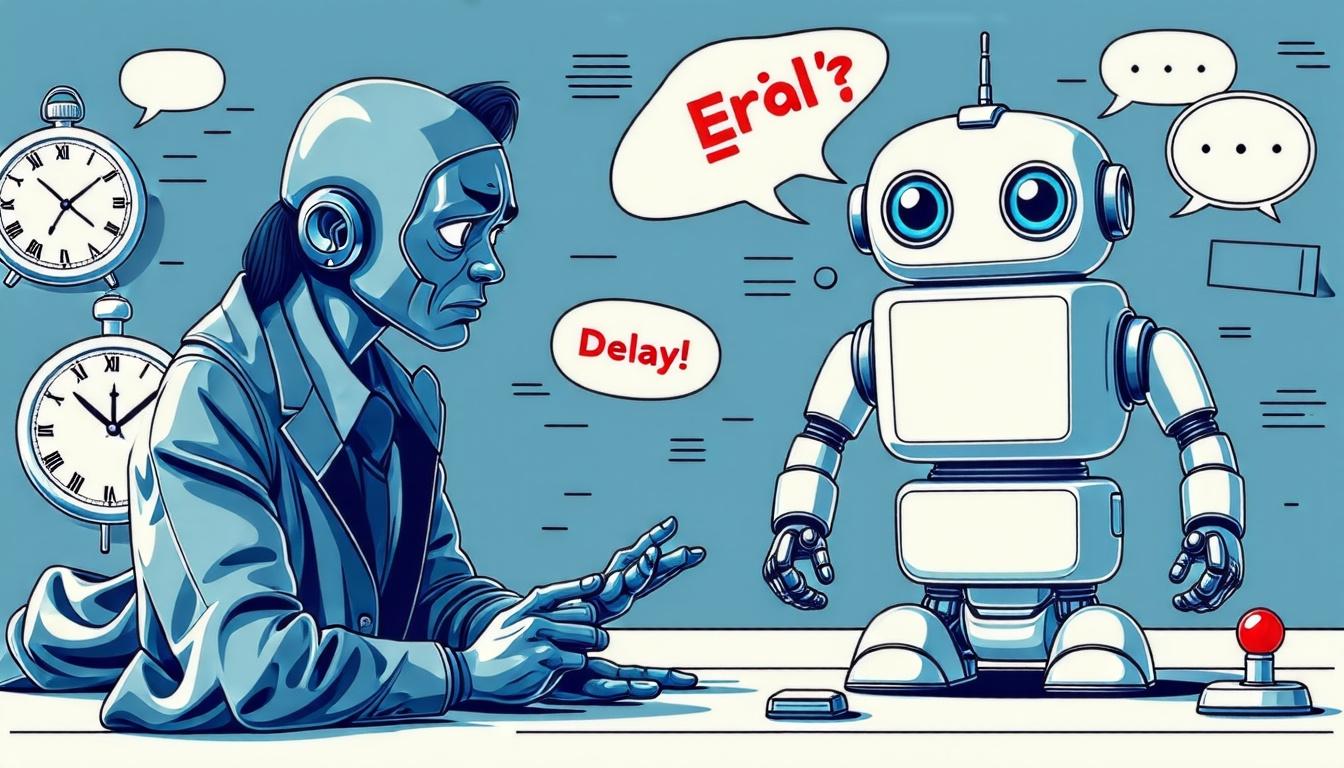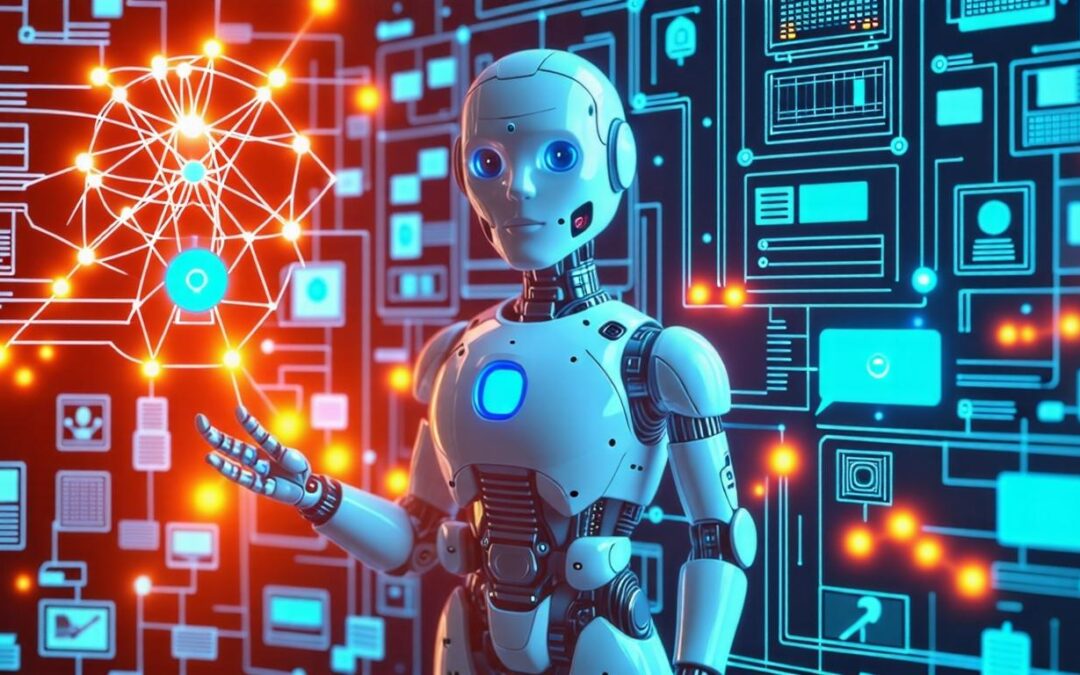A chatbot is a sophisticated computer program that mimics human conversation, providing answers and solving problems through text or voice. Imagine having a knowledgeable friend available 24/7, ready to tackle your questions and concerns instantly. This innovation revolutionizes customer service by delivering immediate responses to common inquiries.
Like a sponge absorbing information, chatbots learn from every interaction, refining their responses over time. This means assistance is always at your fingertips, day or night. Capable of handling multiple conversations at once, chatbots offer a smart solution for businesses, streamlining your interactions and making the help-seeking process seamless!
Key Takeaways
- Chatbots are like digital conversationalists, enabling automated interactions with customers via text or voice.
- Powered by machine learning, they adapt and improve, enhancing self-service options and boosting customer satisfaction.
- Chatbots juggle multiple inquiries simultaneously, satisfying rising consumer demands while slashing operational costs.
- They streamline tasks such as booking and scheduling, transforming customer-business interactions into a easy process.
Understanding Chatbots and Their Functionality
A chatbot acts as your digital assistant, engaging with you through text or voice to answer questions and solve problems. Imagine having a helper available 24/7—whether booking a movie ticket or checking your bank balance. How convenient is that?
These virtual companions use artificial intelligence and machine learning, changing with each interaction. Think of a student mastering math; every solved problem sharpens their skills. This is how chatbots become increasingly intelligent!
Chatbots can handle multiple conversations at once, making them necessary for busy businesses. Picture a chef skillfully managing several dishes simultaneously. This technology allows companies to provide quick, efficient service while testing costs down. Isn’t it interesting how technology simplifies our daily lives?
Types of Chatbots Used in Customer Service
Chatbots serve as your ever-present digital assistants, each designed for specific functions. Rule-based chatbots follow a fixed script, responding to inquiries like a recipe guides a chef. Have you ever encountered a chatbot that felt almost intuitive?
That’s the magic of AI-driven chatbots, which learn from interactions, refining their answers over time—similar to leveling up in your favorite video game.
Then, there are transactional chatbots, your virtual cashiers, expertly finding your way you through ticket bookings or purchases. At last, proactive chatbots take the initiative, reaching out before you even think to ask for help—like a caring friend checking in. Each type plays a critical role in enhancing customer service, making it faster and more effective.
The Role of Artificial Intelligence in Chatbot Development

Artificial Intelligence (AI) serves as the backbone of chatbot development. Imagine a chatbot as your virtual assistant—like a wise friend always ready to help. But how does this friend get smarter?
Through machine learning, which allows chatbots to learn from every conversation. Each interaction acts as a puzzle piece, enhancing their understanding of customer needs.
These chatbots handle multiple conversations with the grace of a seasoned performer. They provide instant responses, transforming customer service into a seamless experience. With AI, they can even anticipate your next question, offering proactive support. This means less waiting and greater satisfaction!
In our quick world, AI-driven chatbots are necessary. They simplify interactions and lift the in general experience, making digital communication feel more human and engaging. Why settle for ordinary when you can have extraordinary?
Natural Language Processing and Its Impact on User Interaction

Natural Language Processing (NLP) empowers computers to understand and engage with human language—both spoken and written. Have you ever chatted with a chatbot? That’s NLP at work! These digital assistants simulate human conversation, providing quick answers and resolving issues effortlessly.
Imagine a chatbot as your savvy friend at a favorite store, offering automated responses while learning from each interaction to improve their help. Thanks to machine learning, they can predict your needs, much like a personal assistant who knows your tastes!
In our quick world, where instant answers are critical, chatbots improve interactions, making them more efficient. They’re not just tools; they’re transforming how we connect with technology.
Benefits of Implementing Chatbots for Customer Engagement
Implementing chatbots for customer engagement is like having a personal assistant available around the clock. Who wouldn’t want instant answers without the wait?
Chatbots provide just that! They automate responses, allowing businesses to handle multiple inquiries at once, saving both time and money.
These smart systems learn from each interaction, improving their responses over time—similar to a student mastering math through practice. They also offer proactive service, reaching out to customers before they even realize they need assistance. Imagine a thoughtful friend reminding you of an significant date!
Chatbots simplify tasks like booking appointments and retrieving information, creating a seamless experience. With chatbots, customer engagement transforms into a fast, efficient, and enjoyable journey.
Challenges and Limitations of Chatbots in Customer Service

Chatbots serve as digital assistants, ready to tackle your questions, but they encounter notable challenges. Have you ever felt the irritation of a chatbot misinterpreting your request?
This frustration is all too familiar! They often struggle with complex queries and can sound mechanical, robbing conversations of their warmth. It’s like talking to a friend who only repeats what they’ve heard—quickly exhausting!
Another significant hurdle is their learning curve. While chatbots improve over time, they don’t always provide accurate answers right away. Imagine them as students refining their skills; consistent practice is critical for growth. Plus, they lack the emotional intelligence that humans possess. If you’re feeling down, a chatbot might miss the cues to offer comfort, unlike a true friend who instinctively senses your mood.
Future Trends in Chatbot Technology and Customer Interactions
Imagine chatting with a friend who knows everything about your favorite games or movies. That’s the magic of a chatbot! These intelligent programs mimic human conversation, providing instant answers and support. Looking ahead, chatbots are poised to become even more sophisticated. They’ll learn from each interaction, much like a dedicated student, continually improving their ability to assist you.
What if your chatbot could predict your needs before you even ask?
Thanks to advancements in artificial intelligence, this is becoming a reality! Envision a proactive customer service agent, skillfully guiding you through a complex maze. Also, chatbots will handle multiple conversations at once, transforming into the superheroes of customer support. As technology advances, expect chatbots to evolve into your necessary assistants for all inquiries!
Summing up
Chatbots are transforming how you engage with businesses. Picture a savvy assistant at your fingertips, ready to deliver instant answers and solve problems around the clock. These digital allies learn from every interaction, sharpening their skills to serve you better. This innovation not only streamlines your support experience but also makes it more enjoyable. By leveraging chatbots, you reclaim valuable time and simplify your quest for assistance. Next time you have a question, remember: a helpful chatbot is just a click away!
Frequently Asked Questions
What are the 4 types of chatbots?
en: The four types of chatbots are rule-based, AI-driven, hybrid, and voice-activated, each serving unique interaction needs.
What technologies are commonly used to develop chatbots?
Common technologies for developing chatbots include AI, natural language processing (NLP), machine learning, and cloud computing.
How do chatbots simplify human computer interaction?
Chatbots simplify human-computer interaction by providing instant, automated responses, making communication seamless and efficient.
How do chatbots improve customer service efficiency?
Chatbots improve customer service efficiency by automating responses, managing multiple queries simultaneously, and learning from interactions.

